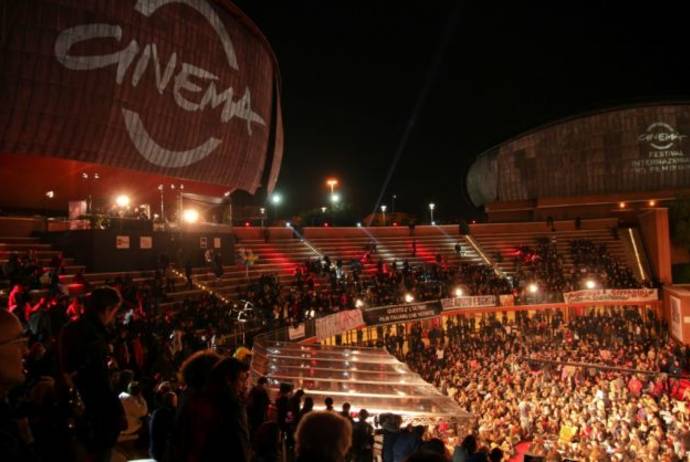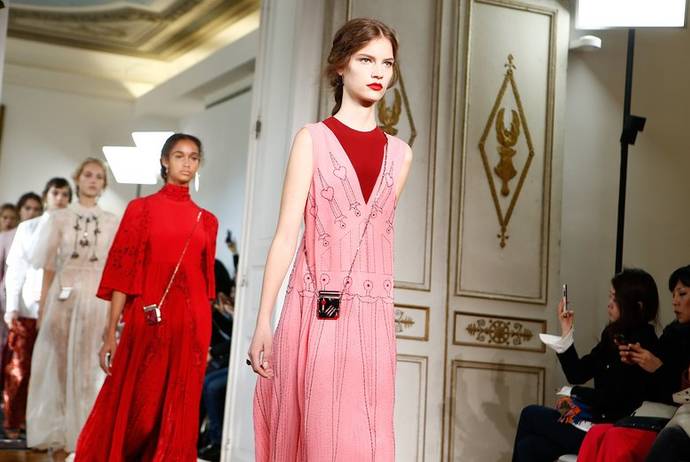On October 14-15, the National Italian American Foundation (NIAF) hosts its 41st Anniversary Gala at the Washington Marriott Wardman Park Hotel in Washington, D.C. Held during National Italian American Heritage Month, this exciting two-day event features a wide array of educational and cultural activities that celebrate the best of Italy here in the United States. The weekend is packed with an abundance of food and beverage, including cooking demonstrations and a wine pavilion, along with giveaways, meet and greets, film screenings, and workshops. The highlight is the concluding black-tie awards dinner that will honor film directors Joe and Anthony Russo, Football Hall of Famer Franco Harris, and singer-songwriter Tony Renis, among many others.
Founded in 1975, NIAF is a non-profit organization dedicated to preserving and protecting Italian American heritage and culture. The foundation serves as a resource for the Italian American community, remaining the largest and most faithful representative of the over 25 million living in the US, and offers many educational and youth programs, such as scholarships, grants, heritage travel, and mentoring. NIAF’s mission also includes empowering ties between the US and Italy, working closely with the Italian Embassy, the Italian American Congressional Delegation, and the White House.
Friday will commence with “NIAF University,” where participants can take part in a series of seminars to dig deeper into their Italian roots. Learn the basics of “la bella lingua” with the Italian Cultural Society of Washington, D.C., and then join Domenica Marchetti, author of seven Italian cookbooks, for a showcase of her favorite traditional recipes. For dessert, enjoy a gelato demonstration and tasting by Gianluigi Dell'accio, owner of DC-based Dolci Gelati. From a book review hosted by Umberto Mucci, author of We The Italians, to a screening of The Neighborhood that Disappeared, a feature documentary by filmmaker Mary Paley, the day is filled with engaging activities free and open to the public.
At 9:30 p.m. the official NIAF 41st Anniversary Celebration will kick-off with an evening of dancing and custom Italian cocktails to the sounds of Lena Prima and friends, along with a silent auction.
Before the Gala on Saturday evening, “Expo Italiana” is the place to enjoy familiar tastes, sights, and sounds of Italian American life. Play bocce ball, visit the Kids Korner for face painting, and learn about Italian dual citizenship, genealogy, language, and travel programs. Treat yourself to food, coffee, and sweets provided by premier partners, say "cheese" in the photo booth, and dance to live music by singer-songwriter Ciro Di Lorenzo and world acoustic accordion champion Cory Pesaturo. There will also be a special performance of “La Tarantella” by Mickela Mallozzi, host and producer of Bare Feet with Mickela Mallozzi.
The NIAF Gala continues to be a staple event for thousands of Italians across the US and Italy, welcoming 1,700 guests this year. Attendees will delight in Italian specialty fare and wine from Piemonte, this year’s NIAF Region of Honor, while enjoying live entertainment and the company of Italian American notables, who have all strengthened the Italian American identity through significant cultural and social impacts. In addition to the aforementioned honorees, NIAF will also honor Stefano Pessina, CEO of Walgreens Boots Alliance, Inc.; Linda Mastandrea, Paralympic Games gold medalist; Dr. Aileen Riotto Sirey; Maria Franca Ferrero; and Giuseppe Lavazza.
Other expected guests include: Vice President Joe Biden and Dr. Jill Biden; Ambassador Armando Varricchio; Supreme Court Justice Samuel Alito; Baseball Hall of Famer Mike Piazza; entertainer Joe Piscopo; actress Marisa Tomei; music executive Tommy Mottola; and actor Robert De Niro.
Upon departure everyone will be gifted with a the ultimate swag bag brimming with products from over a dozen Italian partners, including Ferrero Rocher, Lavazza, Alitalia, DelGrosso Foods, Colavita, and more.
Following the Gala, adjourn to the Lounge Bar for an after party, featuring live music and spirited sing-alongs with Ciro Di Lorenzo.






































